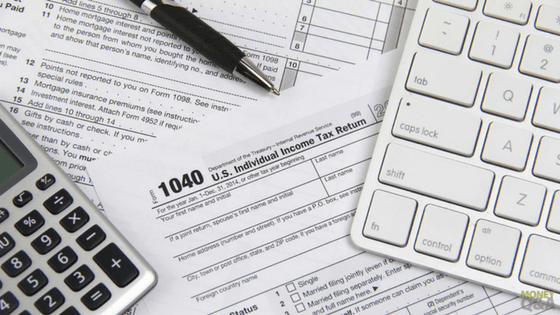
Exploring the reams of options trading isn’t just about picking smart choices for your investments; it also means knowing how taxes work.
One big aspect of taxes in options trading is Form 1099. The goal is to help you see why Form 1099 is important and how it enables you to calculate tax on options trading. Here’s an article to help you understand the basics of Form 1099 step by step.
Form 1099: A Simple Breakdown
Form 1099 is a tax document that records different types of investment income, including the revenue generated from options trading. Brokerage firms issue this document at the close of each tax year, summarizing your trading activities and providing insights into gains, losses, and other transactions tied to options trading.
Essential Information found in Form 1099
Box 1a: Proceeds – This box presents the total proceeds derived from your options trades, encompassing the funds received upon selling options contracts.
Box 1b: Cost or Other Basis – You’ll find the cost basis of the options you sold during the year in this box. The cost basis represents the initial payment you made for those options.
Box 2: Date of Sale or Other Disposition – This box showcases when you sold or disposed of your options contracts.
Box 3: Date Acquired: Here, the date you acquired the options is disclosed. This detail is crucial in determining the holding period.
Box 4: Federal Income Tax Withheld – If any federal income tax was withheld from your options trading activities, this is where it will be documented.
Calculating Taxes with Form 1099
You can calculate the taxes owed from your options trading activities using the data provided by Form 1099. The process can be distilled into the following steps:
Gains and Losses Calculation: By subtracting the cost basis (Box 1b) from the proceeds (Box 1a), you can ascertain each option trade’s gains or losses.
Holding Period Determination: Your holding period (short-term or long-term) relies on the sale date (Box 2) and acquisition date (Box 3). Short-term gains typically face your regular income tax rate, while long-term gains often enjoy preferential rates.
Tax Return Reporting: Report the gains and losses from your options trading on your tax return. Typically, this data is placed on Schedule D of your Form 1040.
Consider Withholding: If there was a federal income tax withholding (Box 4), ensure its inclusion while calculating your overall tax.
Strategizing Your Approach for Optimizing Tax Efficiency
Beyond the basics, advanced options traders can explore strategies for optimizing their tax liabilities.
Tax Efficient Trading Strategies: Craft your trading strategies with tax implications in mind. Strategies such as tax-loss harvesting can help offset gains and losses for a more favorable tax outcome.
Managing Short-Term and Long-Term Gains: Being mindful of holding periods can enable you to strategically time your trades to benefit from preferential tax rates on long-term gains.
Minimizing Taxable Events: Consider the frequency of trading to minimize taxable events. Some of the trades can lead to lower tax obligations.
Exploring the Nuances of Reporting
Ensuring precise and compliant reporting is crucial when submitting taxes related to options trading. Mishandling these aspects can lead to errors or even potential audit triggers. When utilizing Form 1099 for tax calculations, consider these additional points:
Options Strategies and Their Implications: Different options strategies, such as covered calls, straddles, or spreads, have unique tax implications. Research each strategy to understand how it impacts your tax liability.
Adjusted Cost Basis: Sometimes, the cost basis can be changed due to factors like stock splits or mergers. Ensure that you incorporate these adjustments accurately to avoid miscalculations.
Keeping Records: Keep well-organized documentation of your options trading activities, encompassing contracts, dates of transactions, and associated expenses. These records are essential to preparing taxes and in the event of potential audits.
Professional Consultation: Given the intricate nature of options trading taxes, seeking advice from a tax professional can provide tailored guidance and ensure you’re fully compliant with tax regulations.
To accurately calculate and report taxes on trading activities, Form 1099 is an important tool. Mastery of the key insights furnished by this form will ensure that you’ve got your ducks in a row regarding gains and losses from options trading. Accurate reporting and adherence to tax guidelines are like the wind beneath your trading wings in options trading.
